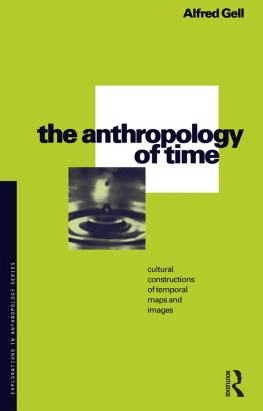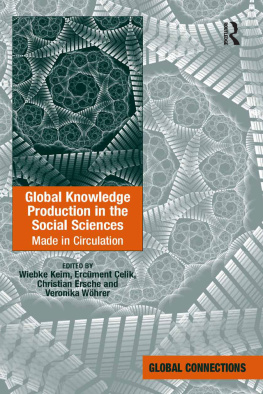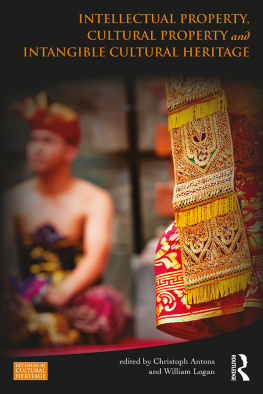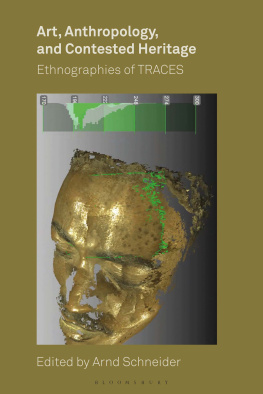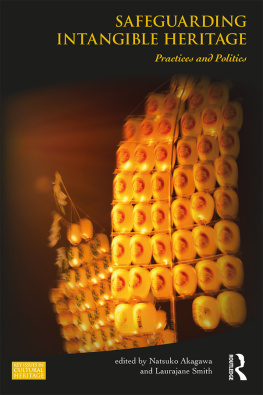
This book is at once penetrating and kaleidoscopic, full of exposition coupled with evocative ethnographic illustration. It extends Gells ideas into new domains The synthesis is extraordinary. Ranging across time and space and diversity of perspectives compared and contrasted, this volume will take its place alongside othersone thinks of The Savage Mind, Purity and Danger.
Frederick H. Damon, University of Virginia, USA
Kchler and Carroll have brought their different anthropological experiences and deep knowledge together in a book to engage the anthropology of art with a deep reading and extension of Alfred Gells framework. Calling for a return to the object, a theoretical project that follows Gells movement away from the emphasis on signification and to the study of relations immanent within objects, the book is ethnographically detailed and philosophically articule. Readers may find it a challenging formulation, spanning over numerous case studies, but it rewards us in profoundly enriching the possibilities of the anthropology of art.
Fred Myers, New York University, USA
Vivid, generous, and theoretically exciting, Kchler and Carroll bring the Anthropology of Art back to the world of big ideas. But never at the expense of the objects themselves. Featuring an extraordinary array of ethnographic detail and insight, this landmark publication is a must-read for anyone seeking to become more alive to the generative, relational, and conceptual capacities of images and objects. The work of apprehension it argues forand offers upis astonishing.
Jennifer Deger, James Cook University, Australia
A Return to the Object
This book draws on the work of anthropologist Alfred Gell to reinstate the importance of the object in art and society. Rather than presenting art as a passive recipient of the artists intention and the audiences critique, the authors consider it in the social environment of its production and reception.
A Return to the Object introduces the historical and theoretical framework out of which an anthropology of art has emerged, and examines the conditions under which it has renewed interest. It also explores what art does as a social and cultural phenomenon, and how it can impact alternative ways of organising and managing knowledge. Making use of ethnography, museological practice, the intellectual history of the arts and sciences, material culture studies, and intangible heritage, the authors present a case for the re-orientation of current conversations surrounding the anthropology of art and social theory.
This text will be of key interest to students and scholars in the social and historical sciences, arts and humanities, and cognitive sciences.
Susanne Kchler is Professor of Anthropology and Material Culture at University College London, UK.
Timothy Carroll is a principal research fellow and a UK Research and Innovation Future Leader Fellow in Anthropology at University College London, UK.
A Return to the Object
Alfred Gell, Art, and Social Theory
Susanne Kchler and Timothy Carroll
First published 2021
by Routledge
2 Park Square, Milton Park, Abingdon, Oxon OX14 4RN
and by Routledge
52 Vanderbilt Avenue, New York, NY 10017
Routledge is an imprint of the Taylor & Francis Group, an informa business
2021 Susanne Kchler and Timothy Carroll
The right of Susanne Kchler and Timothy Carroll to be identified as authors of this work has been asserted by him/her/them in accordance with sections 77 and 78 of the Copyright, Designs and Patents Act 1988.
All rights reserved. No part of this book may be reprinted or reproduced or utilised in any form or by any electronic, mechanical, or other means, now known or hereafter invented, including photocopying and recording, or in any information storage or retrieval system, without permission in writing from the publishers.
Trademark notice: Product or corporate names may be trademarks or registered trademarks, and are used only for identification and explanation without intent to infringe.
British Library Cataloguing-in-Publication Data
A catalogue record for this book is available from the British Library
Library of Congress Cataloging-in-Publication Data
A catalog record has been requested for this book
ISBN: 978-1-350-09348-5 (hbk)
ISBN: 978-1-350-09347-8 (pbk)
ISBN: 978-1-003-08433-4 (ebk)
Typeset in Bembo
by Newgen Publishing UK
Contents
PART I
Rethinking the frame
PART II
Following the prototype
PART III
Rediscovering the object
All images, unless otherwise noted, are the original line drawings of Ian Fogden.
It is our joy to thank the generations of students, some of whom are now practitioners and colleagues, who have taken the Anthropology of Art course we taught over the years. Unknown to them, they have helped shape our ideas and helped select the case studies we employ in these pages.
We also are deeply grateful to Simeran Gell and the staff at the Royal Anthropological Institute, especially Sarah Walpole, Archivist and Photo Curator at the RAI, for their help and encouragement during this process, and for the use of Gells sketch as a cover image.
We also thank Ian Fogden for his great skill and invaluable labour in preparing the sketches used herein as figures.
To our many colleagues at UCL, most notably Ludovic Coupaye who kindly allowed us to consult his field sketches, we are deeply grateful. Our ability to bring this volume together is in no small part due to the rich intellectual community in which we work, and the stimulating conversations we are able to have while teaching.
This book is something of a surprise. In retrospect, it has had a long history, going back at least as far as the publication of Alfreds Art and Agency, and even before that in his teaching and other means of influence upon the authors. In the 20 years since Art and Agency came out, Susanne has used it in her teaching of a course on the Anthropology of Art. Timothy took over this course during a period when Susanne, as Head of Department, was unable to continue teaching it. In the ten years of teaching this course together, and the development of Timothys research in dialogue with the core ideas present throughout the course, a unique and budding conversation has developed between the two of us. Over the years, we have had the privilege of working through, testing, critiquing, and developing the core theoretical frameworks posited in Alfreds work, and we also sought to uncover the often covert and only implicit legacy of ideas and influences shaping Alfreds thoughts.
This gave rise to a co-authored chapter, on Art in the 20th century, where what had been a slow and accidental conversation took on a more purposeful and earnest engagement. During the process of writing that chapter, we realised that there was much more to say about the epistemic nature of an object and its value as data. In the excitement of discovery during that small writing project, we landed upon the idea to write a book-length exploration and elaboration of Alfreds core theoretical


